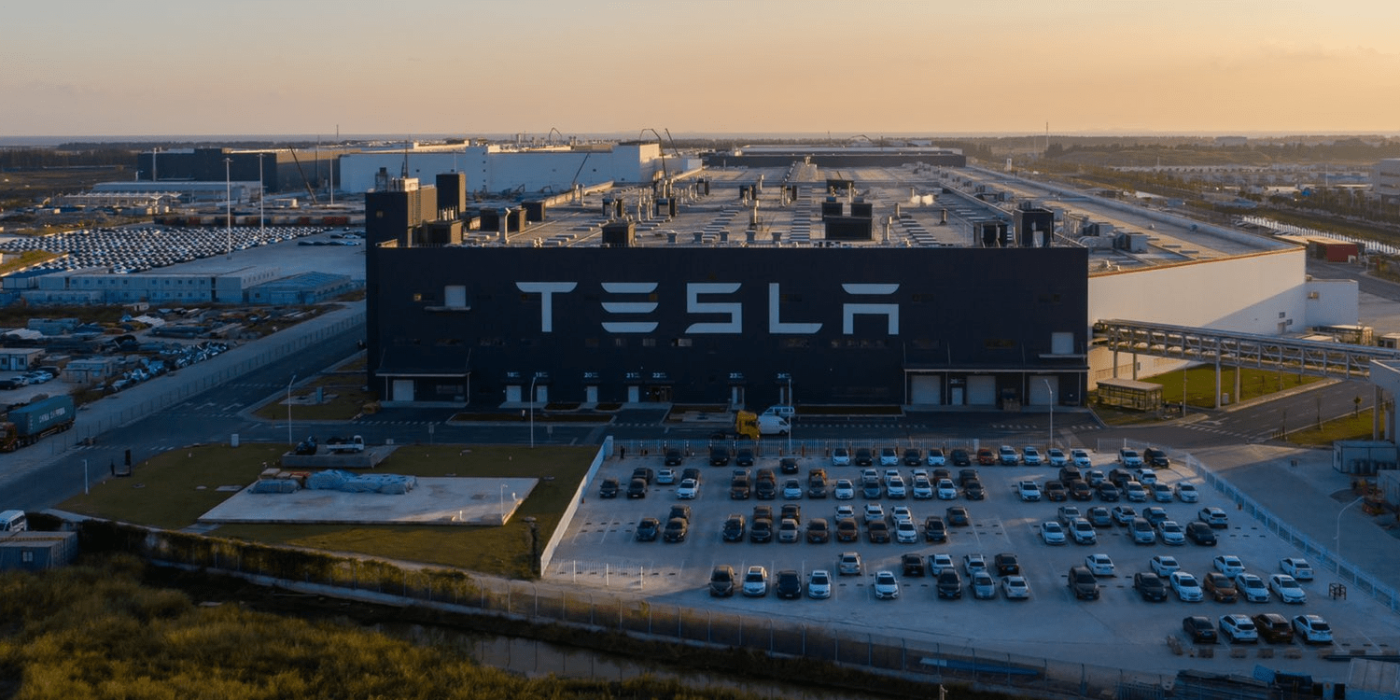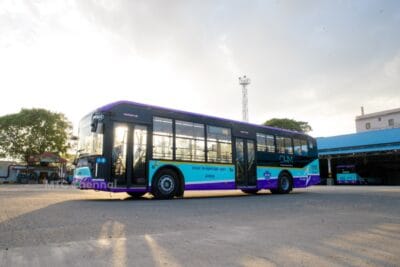Tesla doubles profit over 2022, takes aim for 1.8 million vehicles in 2023
Tesla more than doubled its profit to 12.6 billion dollars in 2022. In addition to several financial records at quarterly and annual levels, two news bits are notable in the annual report: the cyber truck is to go into production before the end of 2023 and Tesla is preparing a “next-generation vehicle platform”.
Tesla delivered a good 1.3 million vehicles in 2022 – a record that is naturally reflected in the Californian electric carmaker’s business figures. With 81.46 billion dollars in sales and 12.6 billion dollars in profits, 2022 will go down as another year of growth for Tesla. The company emphasised that the macroeconomic situation currently poses major challenges and will continue to do so in the near future. At first glance, however, rising energy costs and interest rates are not noticeably reflected in the balance sheet for 2022. The electric car maker increased its income to 81.46 billion dollars, an increase of 51 per cent on the 53.82 billion dollars in sales from the previous year. Of the 81.46 billion dollars, the car division accounted for 71.46 billion dollars in 2022.
Considering that Telsa was still in the red in 2019, it is a particularly notable accomplishment that the company more than doubled its annual profit in 2022 from 5.52 billion dollars in the previous year to 12.56 billion dollars. The company further highlights the operating margin, which stands at 16.8 per cent for the full year (2021: 12.1 per cent). Revenue from CO2 certificates amounted to 1.78 billion dollars in 2022 and thus further grew in relevance (+21 per cent to 2021). However, unlike previous years, even without the contribution of the regulatory credits, there would have been a profit of almost eleven billion euros in the books.
The fourth quarter contributed the most to these annual results. A total of 24.32 billion dollars in sales (+37 per cent on Q4/2021), of which 21.31 billion dollars came from the automotive business, as did 3.69 million dollars in GAAP surplus, a YoY increase of 59 per cent. The operating margin of 16 per cent between October and December did not quite match the recent outlier upward trend. In Q1/2022 it climbed to 19.2 per cent, and in Q3/2022 to 17.2 per cent from a recent value at just under 15 per cent.
According to Tesla, increasing vehicle deliveries have played a significant role in the growth. The production and delivery figures for the fourth quarter of 2022 and thus also for the full year were published at the beginning of the month: according to these figures, the manufacturer delivered 405,278 vehicles in Q4/2022 and thus increased deliveries for the full year to 1,313,851 vehicles – an increase of 40 per cent compared to 2021. Production even increased by 47 per cent (Q4/2022: 439,701 vehicles, full year 2022: 1,369,611 vehicles).
This shows that the factories in Texas and Brandenburg, which came online in 2022, are increasingly contributing rising unit numbers to the overall result. Vehicles built at the Giga Berlin (Model Y) were delivered for the first time last March, and at the Giga Texas in April. Tesla now writes in its annual report that a production capacity of 3,000 vehicles per week was reached at both locations towards the end of the year. The annual figures could certainly have been even better if the Covid pandemic had not caused restrictions in China. In the second quarter there was a dip in the statistics curve due to ongoing supply chain problems and the temporary closure of the Shanghai plant.
Shanghai nevertheless remained Tesla’s highest output plant. In 2022, the US sold 710,865 vehicles built in China – 439,770 stayed domestically and 271,095 were exported. The relative increase from 2021 to 2022 is 67 per cent. The manufacturer says that the factory was “operated close to capacity”.
However, there is still some room for improvement in the total number of vehicles, because Tesla claims the following overview of the maximum possible capacity utilisation, which has remained largely unchanged since the summer: the Grünheide and Texas factories should each be able to contribute 250,000 units, Shanghai 750,000 units and Fremont 650,000 units – in total, this brings the total to up to 1.9 million cars per year. The future models Cybertruck, Semi, Roadster 2, “Robotaxi and others” are not yet included in this figure. However, the Californians have now explicitly confirmed that the Cybertruck, which will come off the production line in Texas, will be built this year. The Semi is already in pilot production, but apparently in still irrelevant numbers. Tesla is not currently naming any capacities for the electric truck, which, according to very recent information, will be manufactured in Nevanda.
Meanwhile, another sentence in the annual report is probably much more relevant for the volume market: “Our next-generation vehicle platform is under development,” Tesla says. Details are to be revealed at the investor day on 1 March. It will revolve around the third generation of the platform, which should help to push down manufacturing costs.
Tesla also made several strategic decisions worth mentioning in its annual report. The carmaker outlined how its restructuring of logistics is bearing fruit: While deliveries used to always ball up at the end of each quarter, this pressure has now eased somewhat: from 71 per cent of Q2 deliveries in the third quarter month to 64 per cent and 51 per cent in Q3 and Q4. The background to this change is that rising production volumes have made it increasingly difficult to “secure vehicle transport capacity at reasonable cost” at the end of each quarter. The other side of the coin is that the discrepancy between vehicles produced and delivered is currently quite high.
It is also notable that one of the factors favouring the new record financial figures was a further increase in the average vehicle price in Q4/2022. The reason is that Tesla has raised prices in numerous countries in recent months and also favours more expensive models when prioritising production. At the same time, referring back to 2017 (when only the expensive premium models S and X were available) and in line with the recent massive price reductions (which will only take effect in the next annual report Q1/2023), Tesla asserts that “our average vehicle prices have generally been on a downward trend for many years”. After all, “To become a multi-million dollar vehicle manufacturer, affordability must improve.”
Tesla also stated a concrete production target for 2023 with around 1.8 million BEVs to be produced. The manufacturer pairs this target with wanting to increase the volume by 50 per cent per year on average over a multi-year horizon. Measured against this target, Tesla grew at an above-average rate from 2020 to 2021, and at a below-average rate from 2021 to 2022 (the aforementioned 47 and 40 per cent in production and deliveries, respectively). Against this background, the target of 1.8 million vehicles is a very low figure. The increase to the good 1.3 million vehicles in 2022 is not even 30 per cent.
With reporting by Cora Werwitzke, France.





0 Comments